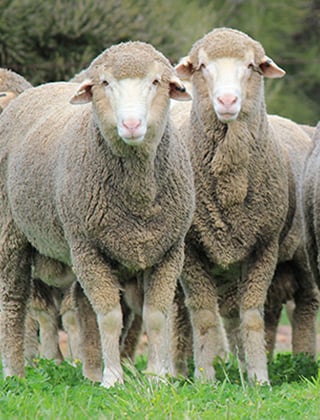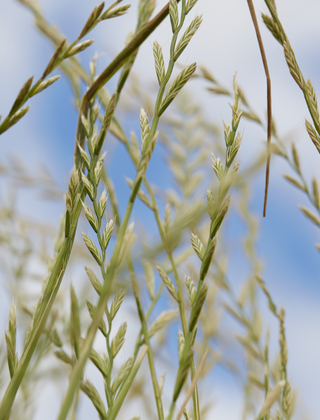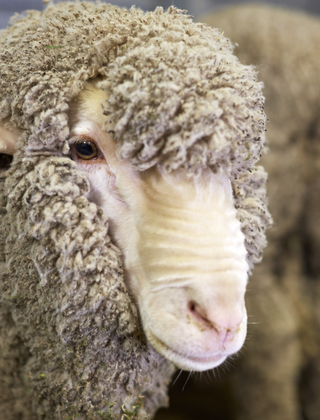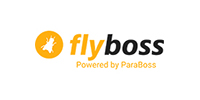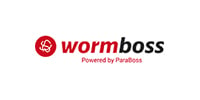Sutherlands shift back into Merinos
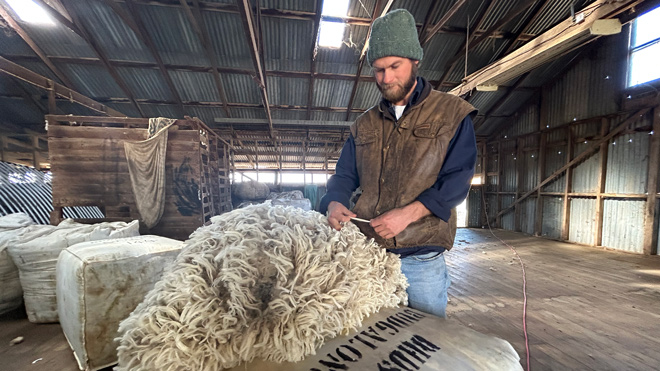
Since Tom Sutherland returned to the family farm at Wellington in NSW, the Sutherland family has shifted away from crossbreds and been building an efficient, productive and profitable self-replacing Merino flock based on modern dual-purpose Merinos that are designed for today’s markets.
When Tom Sutherland came back to the family farm at ‘Budgalong’ near Wellington in the central west slopes region of NSW, he knew he wanted to grow the business.
For more than 30 years, the Sutherlands had built a strong operation around crossbred sheep. It was a system that had worked well for a long time: reliable lambs, decent returns, and a structure that seemed sustainable.
Tom grew up watching his family succeed with it. But when he returned home about six years ago, he realised that the business model that had once served them well may not work as well heading into the future.
“We had access to some of the best first-cross ewes in New South Wales,” Tom said. “They were right next door – we’d literally walk them home up the lane. They produced excellent lambs, and for years we were happy with that.”
But looking at the numbers, Tom soon discovered the system demanded a near-perfect performance every single year to remain economically sustainable.
To make it work, they needed to consistently wean about 20% more lambs, hit foetus conversion rates of 90%, and maintain extremely high efficiencies – all while dealing with unpredictable seasons and shifting markets. It meant there was no room for error.
“Every year you had to nail it,” Tom said. “And you can’t always do that. The environment can change things around. You get a cold snap, a dry spring, or a poor lambing season, and suddenly the KPIs become challenging.”
At the same time, crossbred wool prices had collapsed.
With high replacement costs for ewes, expensive inputs, and pressure to deliver exceptional lambing results year after year, the margins were getting squeezed tighter and tighter.
Choosing Merinos
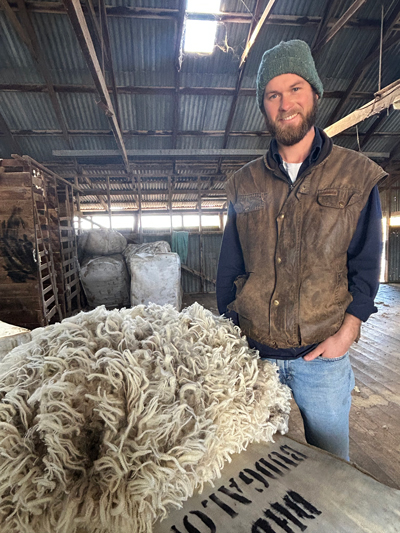
Tom Sutherland with the clip at ‘Budgalong’ near Wellington, NSW, where the Sutherland family runs about 6,600 joined ewes plus ewe lambs, with 3,500 Merinos joined to Merinos.
The business needed a model that could absorb the shocks.
That’s when the Sutherland family started looking at Merinos again: modern dual-purpose Merinos designed for today’s markets.
Genetics had changed, and so had the opportunities. Merinos can now produce a high-value fleece while also turning off quality lambs quickly and efficiently.
So, for Tom it was a case of combining those two incomes and building a business that was not only profitable but resilient.
They had the chance to buy classed-in Merino breeding ewes from three different properties in South Australia – top-quality sheep from proven bloodlines.
They selected 3,500 ewes that weren't mulesed and were aligned with Responsible Wool Standard (RWS) – which Tom says are non-negotiables for a business positioning itself for the future.
He says the global wool market had already made it clear that sustainability and welfare would drive premiums, and Tom wanted to be ahead of the curve.
What followed was a complete shift in strategy.
He said the enterprise will now steer towards building a self-replacing Merino flock, phasing out the crossbreds and creating a system that balances wool and lamb production.
Benchmarking data confirmed what Tom was seeing on the ground: even the average dual-purpose Merino producers were outperforming the top 10–20% of crossbred operations.
“That was a real eye-opener,” Tom said. “It showed us we didn’t need to be perfect every single year.
“With Merinos, you can have a tough season and still come out okay. That’s what resilience looks like.”
Efficiency and performance
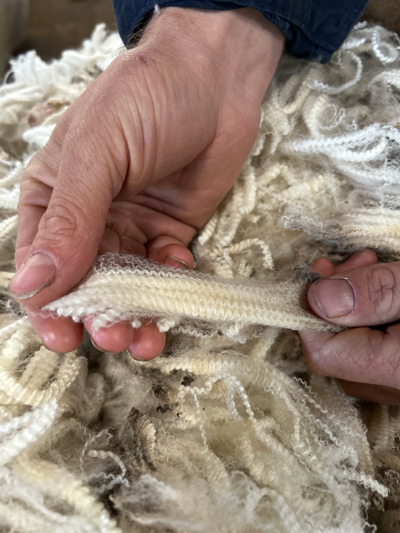
The goal at ‘Budgalong’ is to cut about 6.5 kilograms of 18–19 micron wool per head.
The modern Merino has also impressed Tom with its efficiency and performance.
“With the Merino, the ewe efficiency was one of the biggest drivers when we were looking for sheep – a lower cost sheep that we could run – easy care, easy maintenance, and produce lambs that could turn off, into a prime lamb as well, when joined to the terminal,” Tom said.
And gone are the days when a Merino wether took 12 months or more to finish.
Fed lucerne on highly improved country, Tom has seen weight gains of up to 300 to 400 grams a day in Merino ewe hoggets.
And because the genetics are well suited to their environment, the sheep are easier to manage, with less maintenance and fewer treatments required.
Flystrike, once a major concern, has also been dramatically reduced thanks to improved skin types.
During one particularly humid spell following 150 mm heavy rain in 15 days last December, Tom treated just a dozen sheep out of thousands with no prior fly treatment – a result he describes as “a huge testament” to the skin type in the animals he’s running now.
The change has also given Tom greater flexibility in managing his land and resources.
With a move towards a spring joining system, the business is simplifying its operations and creating more time and better use of labour resources, whilst also increasing cashflow.
Their even summer-winter rainfall pattern means lambs can be turned off steadily throughout the year, making the enterprise more predictable and efficient.
Today, the Sutherlands run about 6,600 joined ewes plus ewe lambs, with 3,500 Merinos joined to Merinos.
The goal is to cut about 6.5 kilograms of 18–19 micron wool per head, weaning 130%, turning off prime Merino lambs in under 10 months, and offer a highly sought after replacement ewe to the market.
By keeping everything aligned with market demands – from genetics to welfare standards – Tom hopes to make the business more resilient.
By combining wool and meat, overheads can be diluted, reducing his cost of production, and creating a more robust business model.
Even when prices move against them or the season turns tough, the business can absorb the hit and keep moving forward.
A future-proofed business
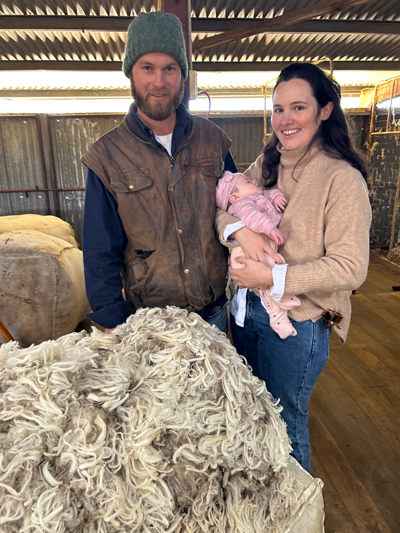
Returning to Merinos has been a strategy to future-proof the business.
At just 29, Tom decided what many in his generation are avoiding. While plenty of young farmers are leaning into cattle or cropping – systems they see as less labour-intensive – Tom has backed the Merino, and he’s doing it with data, strategy, and confidence.
“People still think Merinos are hard work,” Tom said. “And some are. But there are Merinos, and then there are Merinos. If you choose the right sheep for your environment and pick the right bloodlines, they can work with you, not against you.”
For Tom, the return to Merinos hasn’t been about sentiment or tradition – it’s been about building a business that performs today and can handle whatever the next few decades throw at it.
The combination of steady wool returns, efficient lamb production, and alignment with global sustainability standards has transformed the operation into one that’s both profitable and resilient.
For Tom, it’s not just about running sheep; it’s about building a business model designed to work in both good and bad periods.
“I wanted a system that could handle the ups and downs in farming,” he said.
“Merinos will provide us with that. They will offer options, stability, and profitability.”
This article appeared in the Spring 2025 edition of AWI’s Beyond the Bale magazine that was published in September 2025. Reproduction of the article is encouraged.






